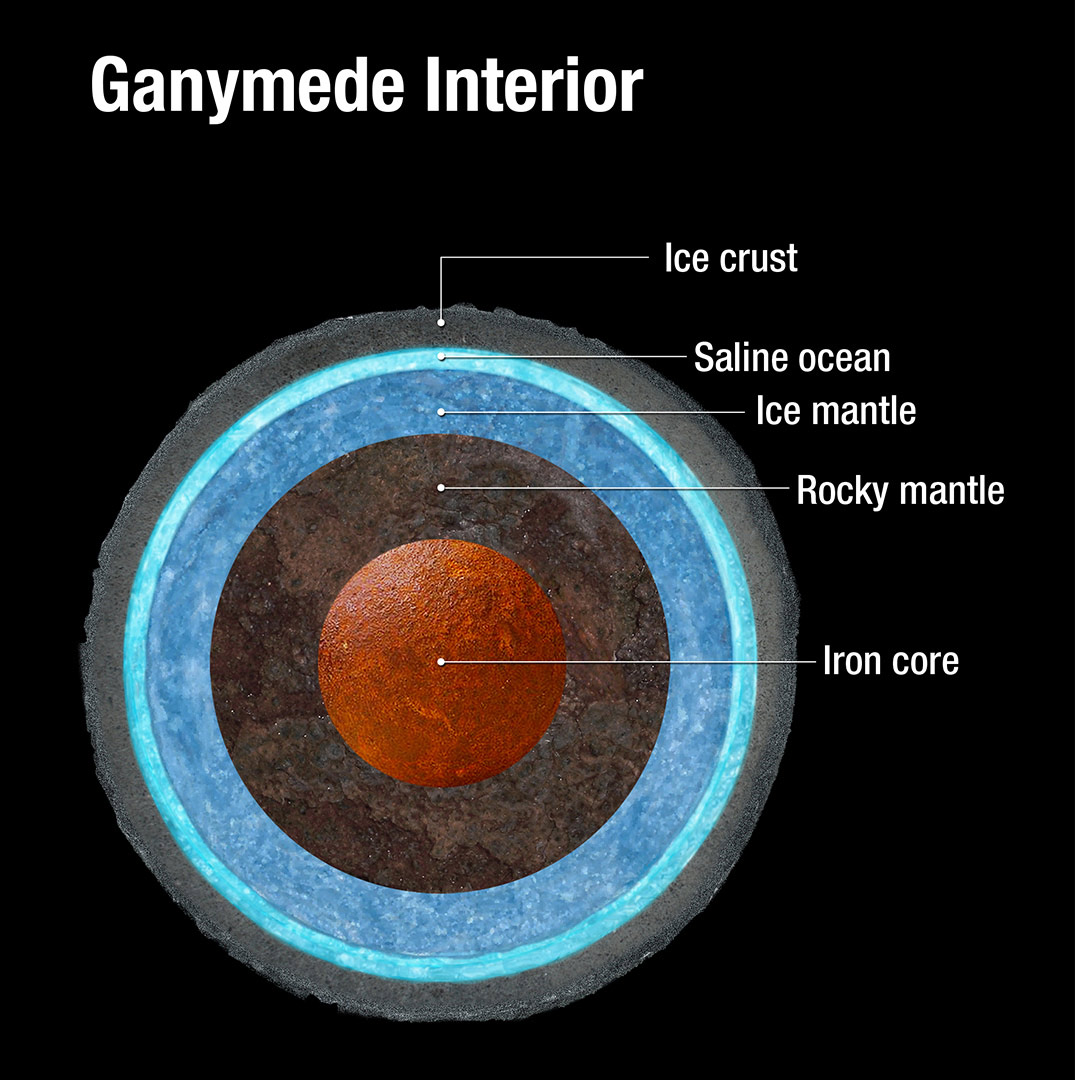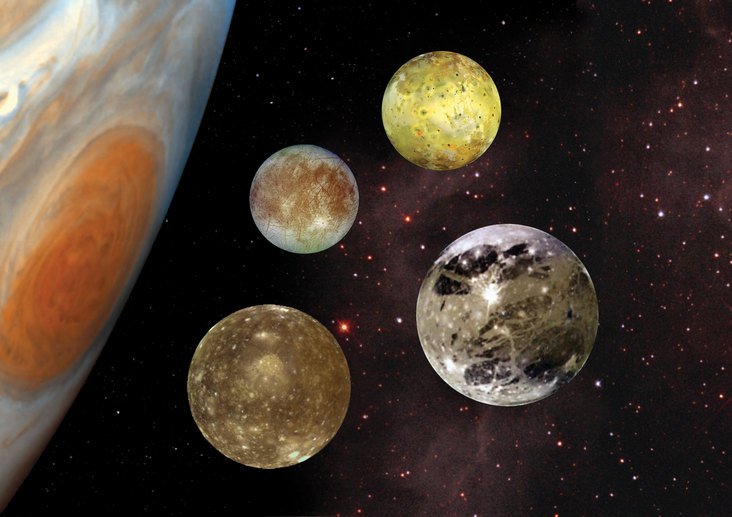Interestingly, stargazers have revealed proof of water fume in the air of Jupiter's moon Ganymede. This water fume structures when ice from the moon's surface sublimates - that is, abandons strong to gas.
Researchers utilized new and recorded datasets from NASA's Hubble Space Telescope to make the revelation, distributed in the diary Nature Astronomy.
Past research has offered incidental proof that Ganymede, the biggest moon in the nearby planetary group, contains more water than the entirety of Earth's seas. Nonetheless, temperatures there are cold to the point that water on a superficial level is frozen strong. Ganymede's sea would dwell approximately 100 miles underneath the hull; along these lines, the water fume would not address the dissipation of this sea.
Stargazers reconsidered Hubble perceptions from the most recent twenty years to discover this proof of water fume.
In 1998, Hubble's Space Telescope Imaging Spectrograph (STIS) took the primary bright (UV) pictures of Ganymede, which uncovered in two pictures vivid strips of energized gas called auroral groups, and gave additional proof that Ganymede has a frail attractive field.
The likenesses in these UV perceptions were clarified by the presence of atomic oxygen (O2). However, some noticed highlights didn't coordinate with the normal discharges from an unadulterated O2 air. Simultaneously, researchers closed this disparity was probable identified with higher convergences of nuclear oxygen (O).
As a feature of a huge noticing system to help NASA's Juno mission in 2018, Lorenz Roth of the KTH Royal Institute of Technology in Stockholm, Sweden drove the group that set off to quantify the measure of nuclear oxygen with Hubble. The group's examination joined the information from two instruments: Hubble's Cosmic Origins Spectrograph (COS) in 2018 and chronicled pictures from the Space Telescope Imaging Spectrograph (STIS) from 1998 to 2010.
Shockingly, and in opposition to the first understandings of the information from 1998, they found there was not really any nuclear oxygen in Ganymede's environment. This implies there should be another clarification for the obvious contrasts in these UV aurora pictures.
Roth and his group then, at that point investigated the general dispersion of the aurora in the UV pictures. Ganymede's surface temperature shifts unequivocally for the duration of the day, and around early afternoon close to the equator it might turn out to be adequately warm that the ice surface deliveries (or sublimates) some modest quantities of water particles. Truth be told, the apparent contrasts in the UV pictures are straightforwardly connected with where water would be normal in the moon's air.
"So far just the sub-atomic oxygen had been noticed," clarified Roth. "This is created when charged particles disintegrate the ice surface. The water fume that we estimated now begins from ice sublimation brought about by the warm getaway of water fume from warm frigid districts."
This discovering adds expectation to ESA (European Space Agency's) impending mission, JUICE, which represents JUpiter ICy moons Explorer. JUICE is the main huge class mission in ESA's Cosmic Vision 2015-2025 program. Gotten ready for dispatch in 2022 and landing in Jupiter in 2029, it will go through no less than three years mentioning itemized objective facts of Jupiter and three of its biggest moons, with specific accentuation on Ganymede as a planetary body and expected environment.
Ganymede was distinguished for definite examination since it gives a characteristic research center to investigation of the nature, development and possible tenability of frosty universes by and large, the job it plays inside the arrangement of Galilean satellites, and its interesting attractive and plasma associations with Jupiter and its current circumstance.
"Our outcomes can furnish the JUICE instrument groups with significant data that might be utilized to refine their perception intends to upgrade the utilization of the shuttle," added Roth.
The present moment, NASA's Juno mission is investigating Ganymede and as of late delivered new symbolism of the cold moon. Juno has been considering Jupiter and its current circumstance, otherwise called the Jovian framework, since 2016.
Understanding the Jovian framework and unwinding its set of experiences, from its starting point to the conceivable rise of livable conditions, will furnish us with a superior comprehension of how gas goliath planets and their satellites shape and advance. Also, new bits of knowledge will ideally be found on the livability of Jupiter-like exoplanetary frameworks.
The Hubble Space Telescope is a venture of global participation among NASA and ESA (European Space Agency). NASA's Goddard Space Flight Center in Greenbelt, Maryland, deals with the telescope. The Space Telescope Science Institute (STScI) in Baltimore, Maryland, conducts Hubble science activities. STScI is worked for NASA by the Association of Universities for Research in Astronomy in Washington, D.C.







![Is Helium a Noble Gas? [ EDU Science ]](https://blogger.googleusercontent.com/img/b/R29vZ2xl/AVvXsEhnf4spv6HGlGiVe5Zu3zN6z4KP91ZQfpPrQurkHaeBksi6eOYDbVr1Cyvfd51AP99ebC48IwK2xsGZIarbflINNfC5_FFYrfqg3h1qNR01uUzM_umyNUg2S5c8aWHKQLjBYSE9UoHSIw/w100/cartoon-happy-frog_160606-288-removebg-preview+%25283%2529.png)
![What is aerodynamics?[ EDU Science ]](https://blogger.googleusercontent.com/img/b/R29vZ2xl/AVvXsEhN4R6-c-aaMLVew58tuGqq54Gu1bN6I1ICP_wLrCZPVI9UttDlBVIMNzn9OGrIlSJ8sGwgb5JBsH8E8eMxy-sjgUmOIZvBjcE8OWuPMOauTQdjFe1slakhBWpqfeqZB8HHnLouFN_uNg/w100/unnamed.jpg)
0 Comments
If you have any doubt let me know.